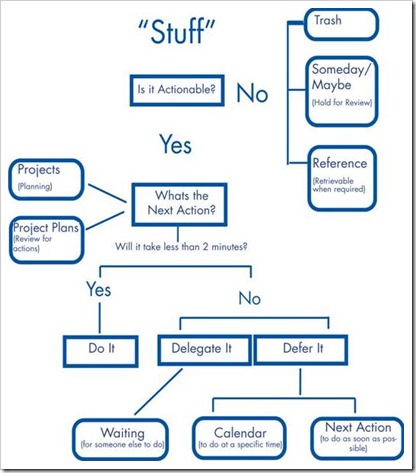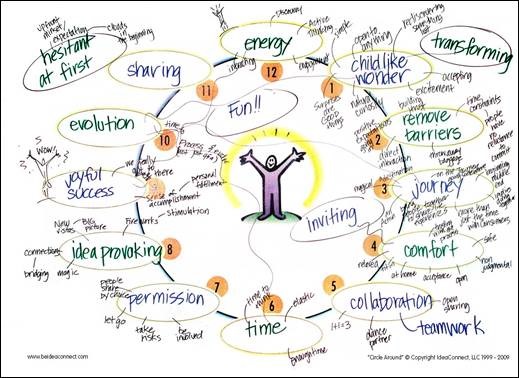Effective Workflow Management 3: The Permanent Solution To Complete A Project Without Losing Hair
[This is 7th article in the #ProductivityHacks series currently running on Trak.in]
It takes half your life before you discover life is a do-it-yourself project – Napoleon Hill
Ask any entrepreneur or professional, what is his worst nightmare?
Out of 10, 9 times it would be the same: Incomplete Projects. There are several aspects to this problem: the first being the definition of the word “Project”. There is tremendous ambiguity regarding this term itself. No wonder projects are most of the time incomplete as they are not well defined and well planned right at the time it is born.
In this chapter, we shall discuss ways to start a project, plan it optimally and execute it without losing hair!

In the last chapter, we had discussed ways to create an effective Process, which will result in optimal usage of the Collected Information, so that we don’t waste our time in the endless pursuit of Information and Data. We had shared one chart depicting the complete cycle of decision making, once the information has been collected:

In case a particular task cannot be completed or delegated within 2 minutes, it can be classified as a project, and hence a separate process is required to finish that.
Contents
What is a Project?
In very simple terms, a Project can be defined as any desired result, which requires more than one action step accomplish it. For example, you wish to open a new branch of your business in a new city. This can be classified under Project, as it’s a long term work and the desired action: Opening a New Office will require several more steps to get it accomplished.
If you don’t define it as a Project, then you won’t be able to comprehend how work has been completed and how much work is now remaining; which are the two most important facts to know about a Project.
Do You Actually Work On The Project?
Surprisingly, no! You can never work on the Project. You can only work on the related steps and actions which will help you to finish that Project.
Initially, once the information and the idea is collected, you can include the project in the Master List, and then plan out the steps which are required to complete it. Once enough of these steps have been completed, and you start to envision a scenario where in you are able to see the desired output, you can be sure that the Project is going in the right direction.
The Five Steps of Project Planning
David Ellen, in this epic productivity book: “Getting Things Done”, enlists the 5 natural steps which can be used effectively in project planning. These 5 steps can be followed for each and every project which you envision, and if followed rigorously, you can be sure that the project will complete.
- Defining Purpose
- Envisioning The Outcome
- Brainstorming
- Organizing
- Performing the action-repeat-action
Now let’s analyze each of these steps closely:
A) Defining Purpose
Before you enlist a task; an idea or an information as a Project, pause for a second, and find out the “Why”..
“Why do you want to start this project?” “What is the purpose behind this?”
In order to bring out clarity and motive of the project, you will need to do a self-analysis of the whole picture, and find out the “Why” of this project. Once you are done, write it down. Try to write the purpose of the project in one single sentence, and remember it. It will help you to stay focused and clear about the intention of starting a project in the first place.
Some of the important points of determining the “Purpose” of the project before you start:
- It defines what success actually is
- Decision making will become easier
- You can leverage your existing resources in a better way
- Your focus is cleared
- You will have more options to choose from
B) Envisioning The Outcome
Say your next project is to own a SUV, replacing the old sedan which is now boring. Now, envision the outcome: You are driving down the beautiful highway, your hands on the solid steering wheels, legs on the accelerator, and eyes on the road. Close your eyes for a moment, and envision the scenario.
This is what we call, the real envisioning the outcome: The “What” of your Project. It is said that “Start with the end in mind”. Before you start working on the project, envision the outcome and live through it.
By writing down the “Purpose” of the project, you can very well now envision its outcome as well, and store it somewhere in your mind. The scenario will be stored somewhere in the sub-conscious mind, which will actually propel you to work towards it. It will motivate you and inspire you to finish off the project within the deadline.
C) Brainstorming
This stage is the “How” of your project. How will you execute it, and execute it within the deadlines, with perfection?
The previous two steps of “Why” and “What” will help you to unveil the “How” part effectively. Hence, don’t do this step unless you complete the previous two steps.

Once you have the purpose and have envisioned the outcome, ideas and topics will start popping up inside your brain. Once that starts to happen, just write them down. There are three main rules for brainstorming:
- Don’t judge or compare the ideas. Don’t criticize or evaluate! Just write down the ideas as they come
- Don’t go for ‘quality’ but go for ‘quantity’
- Forget your previous experience in accomplishing the projects or your worldview. Just write down the ideas as they come.
D) Organizing
As ideas which were residing inside your mind come out in the open, in a physical format, you will start viewing the connections and a pattern will emerge. Depending on your expertise and your experience in your domain, this pattern will depend on several factors.
As of now, you are aware of: the purpose, the outcome and the ideas which will help to accomplish the results.
Now, map everything into one blueprint, and organize the data to create steps and sub-steps. For example, ask these questions:
- Which actions must be completed so that I get the desired results?
- What is the order of action steps?
- Which is the most important element of these actions steps which must be accomplished daily?
- What are my resources and my limitations?
- How much time do I really have for this project?
You can break down this whole process of Organizing the ideas erupted from Brain Storming can be divided into sub-steps such as:
- Identify the key actions
- Sort them on the basis of:
- a) Components
- b) Sequences
- c) Priorities
- identifying the next steps and creating a process
No two projects will have the same Organizational Plan and Blueprint: depending on your objectives and the requirements, the whole blueprint can be customized so as to achieve the final result: The desired outcome of the Project.
You can use Mind Mapping Software and Tools which can help you to organize your random ideas and create an effective blueprint. Some of the recommended Mind-Mapping tools which are free to use are: http://www.mindmeister.com/ ; http://www.mindomo.com/ ; Thoughtograph Software etc.
E) Performing the action-repeat-action
And finally, after all the planning and organization of your thoughts and ideas, you will arrive at the final and ultimate step: Action.
Yes, you can start this action even before you have planned it, but then it will make the whole exercise a terrible time-waste. Hence the real action is recommended after you have organized and optimized your thought, and after you are aware of the most important answers to: ‘Why’ ; ‘What’ and ‘How’.
One very important factor in performing action is the knowledge of the “next thing” you will need to do right now. At any given moment within the whole project planning and execution stage, you must be aware of the next thing which you ought to do so as to keep the momentum going. It is like even if you get awake in the middle of the night, you should be aware of the next action which your project needs right at that moment.
Make up your mind with the end goal, and keep performing the steps required to accomplish the project. In later chapters on Procrastination, we shall discuss ways to stay focused on the task, and how to kill Procrastination.
Previous Chapters in “#ProductivityHacks For An Entrepreneur” Series
